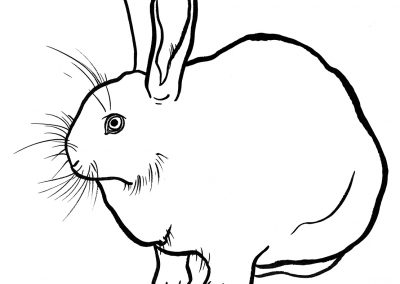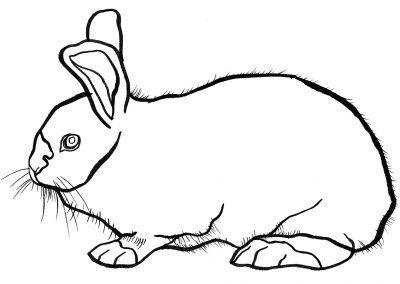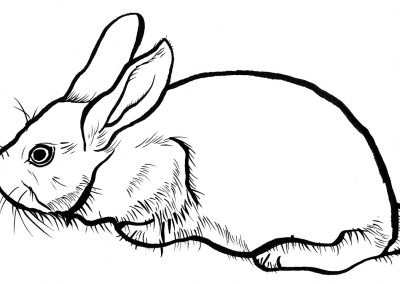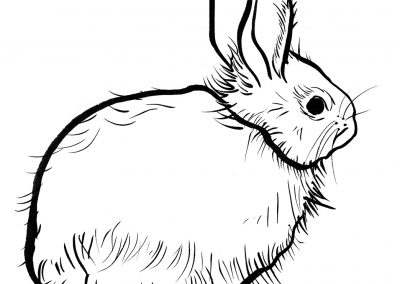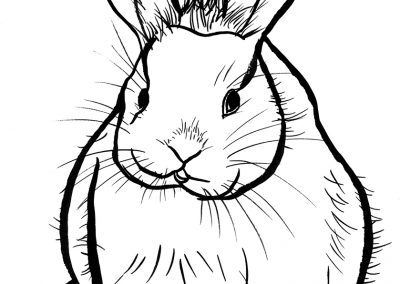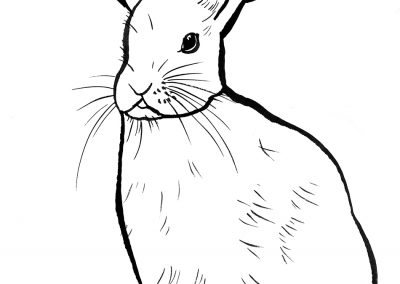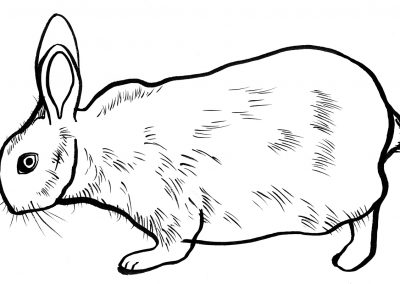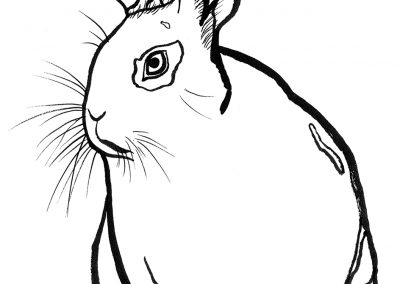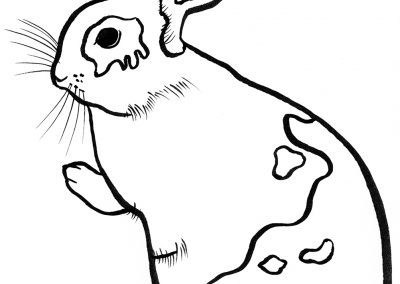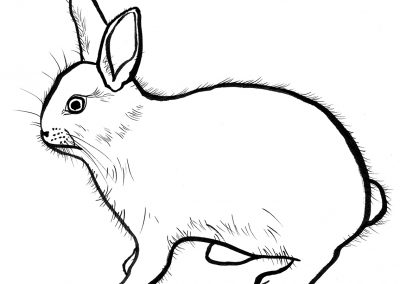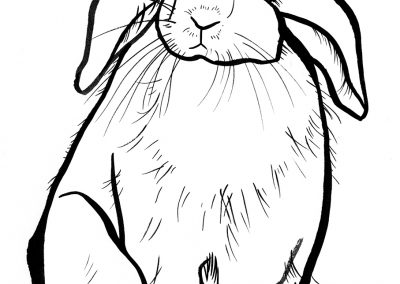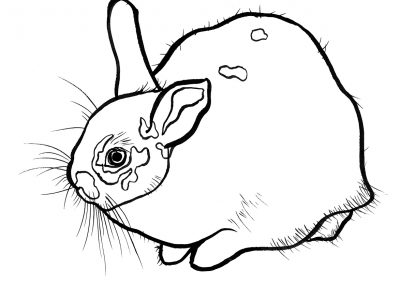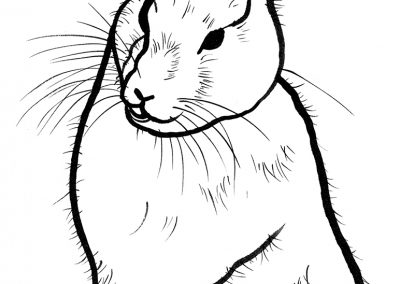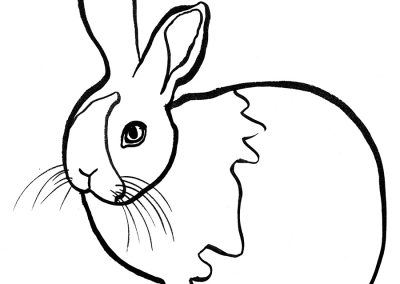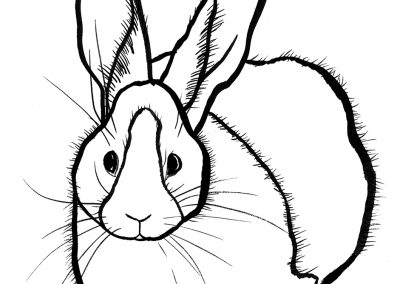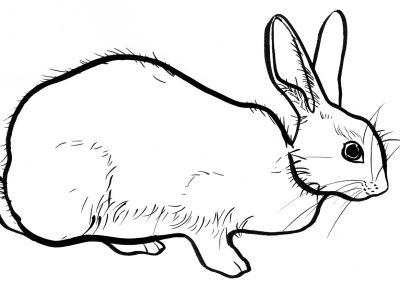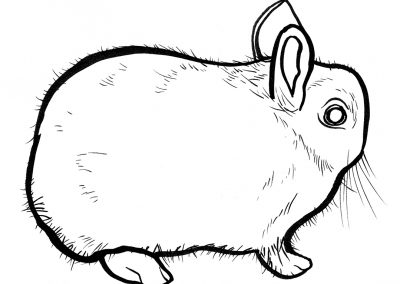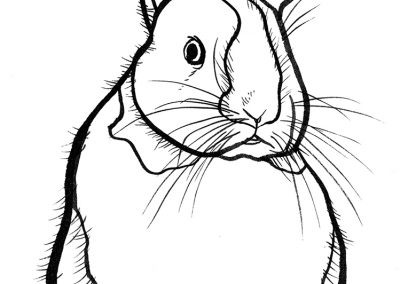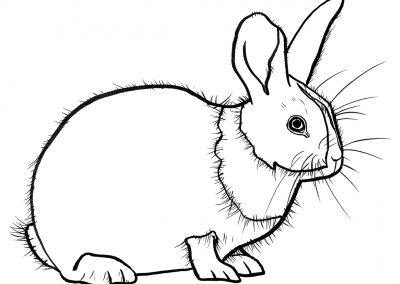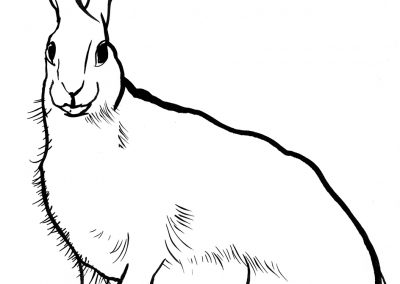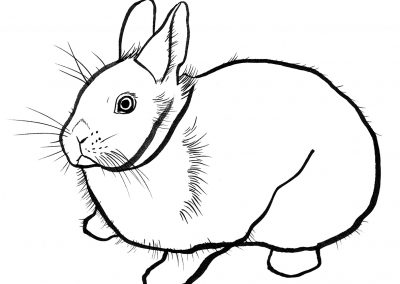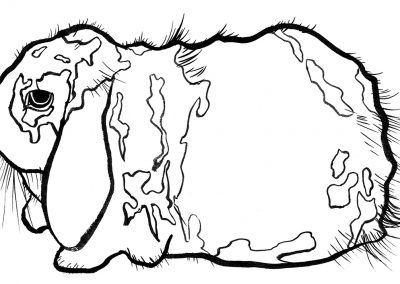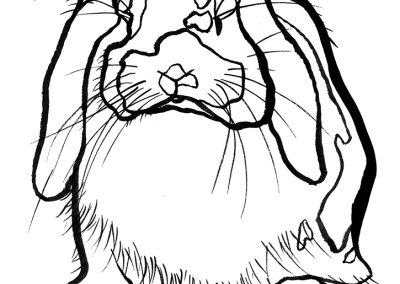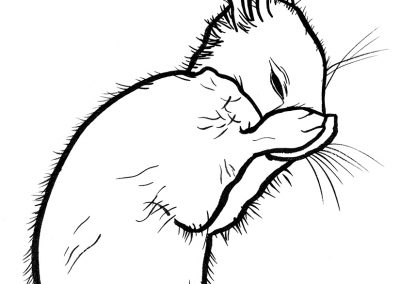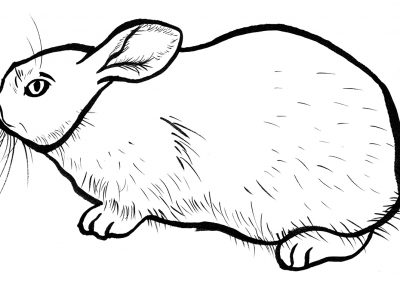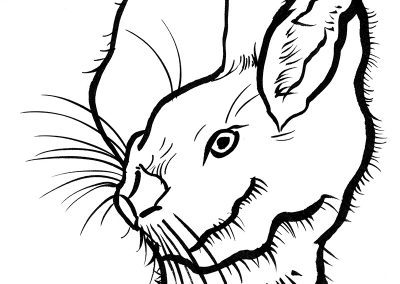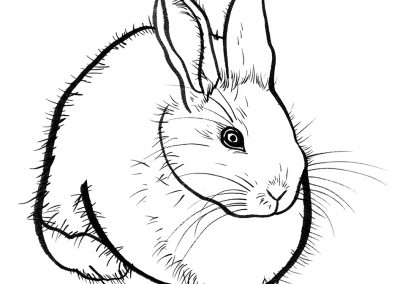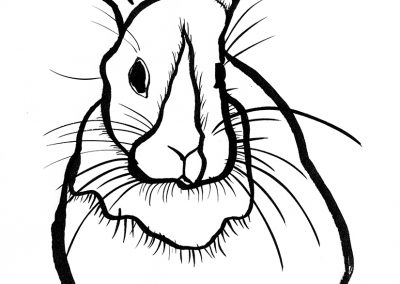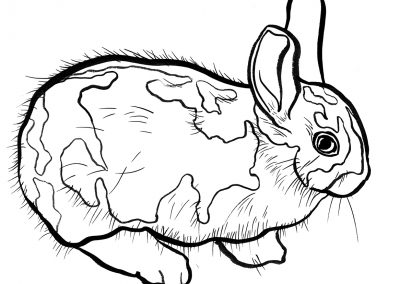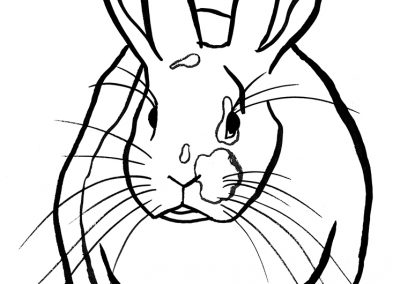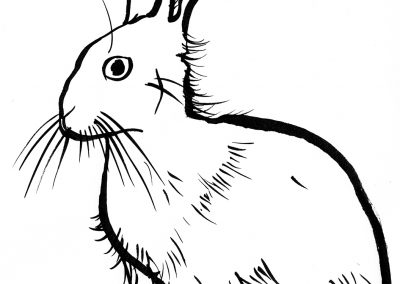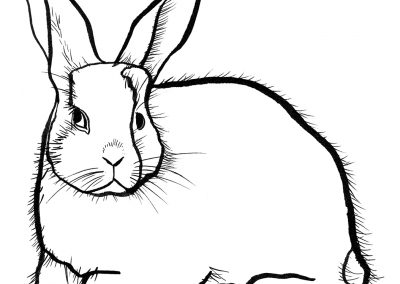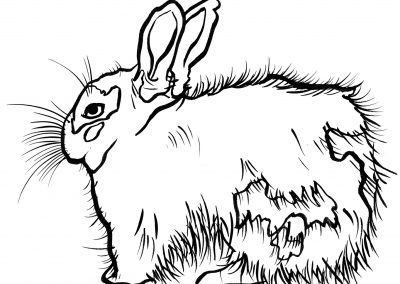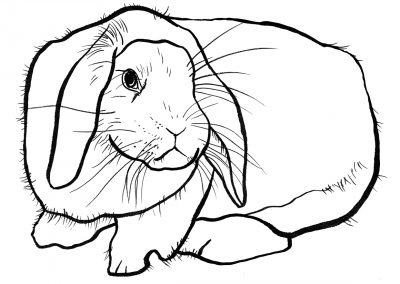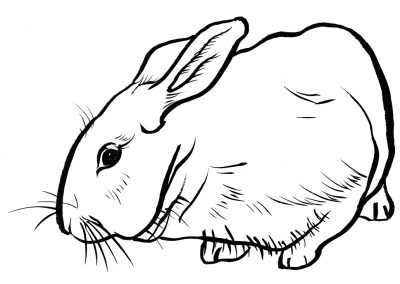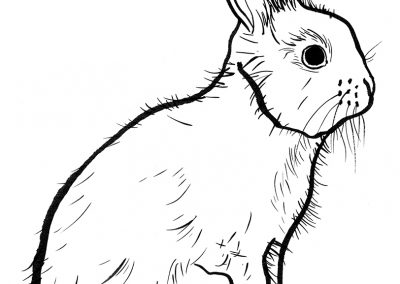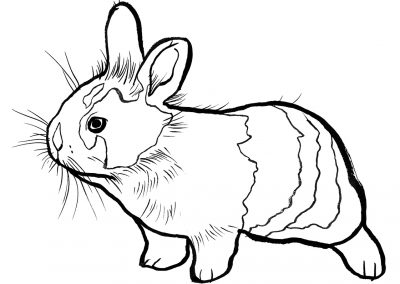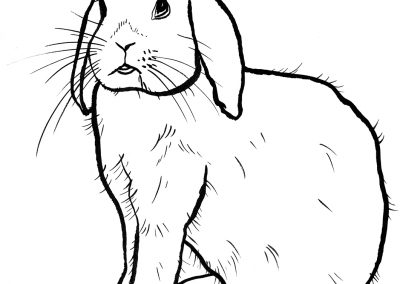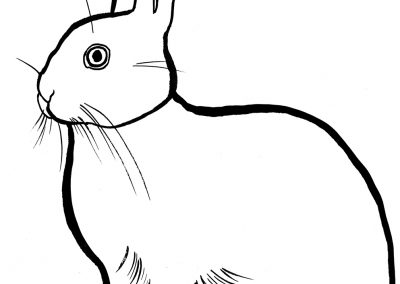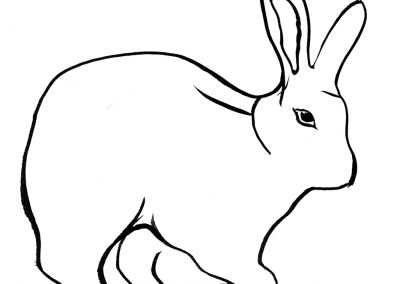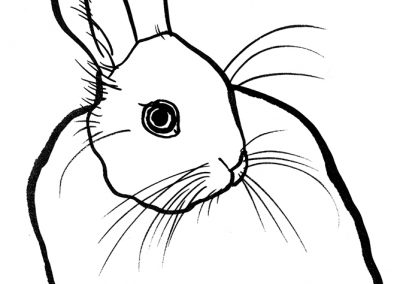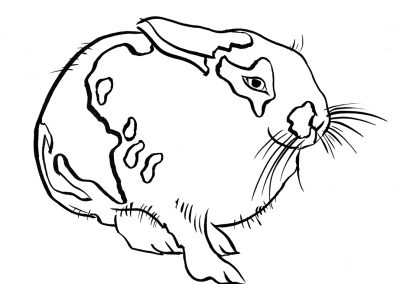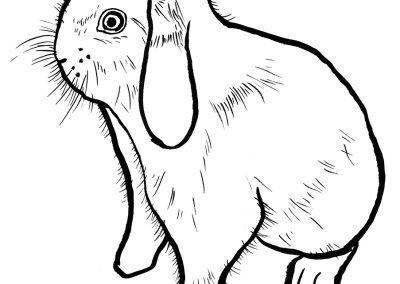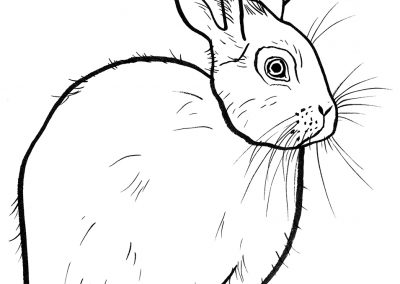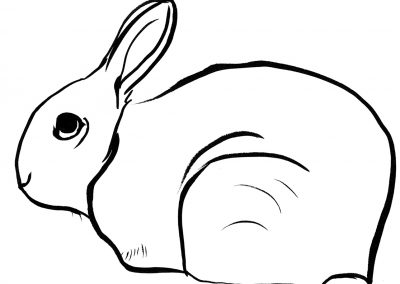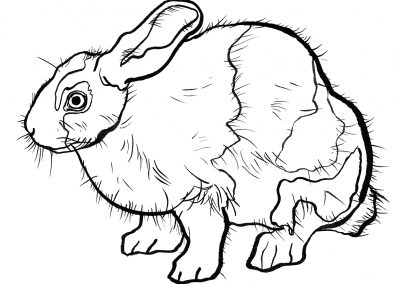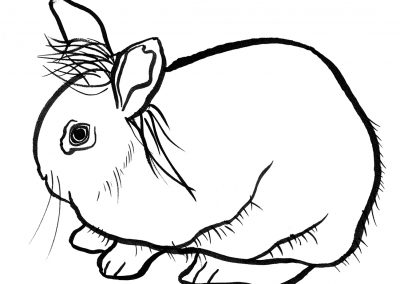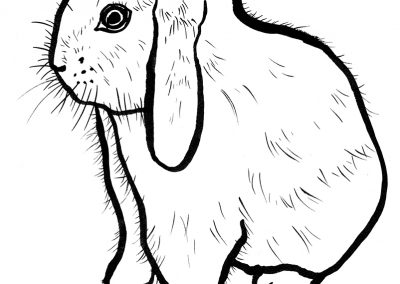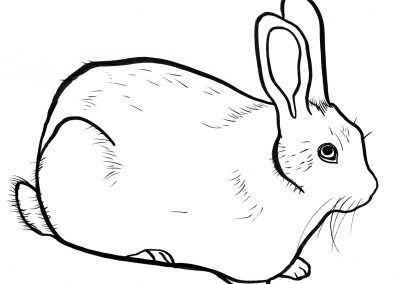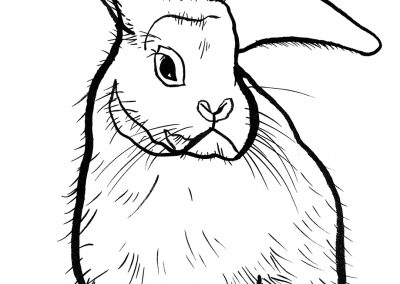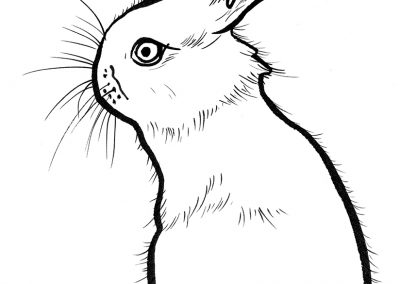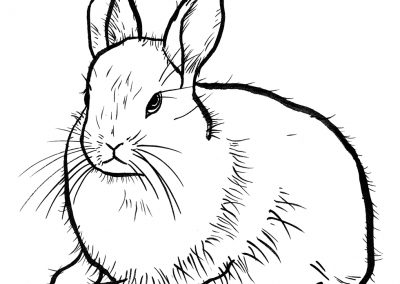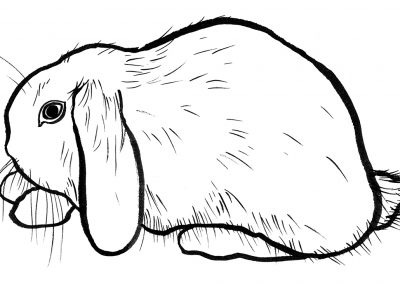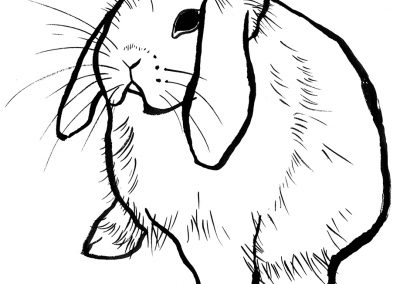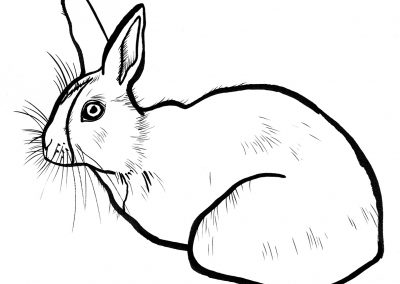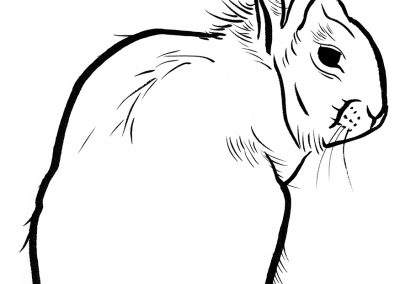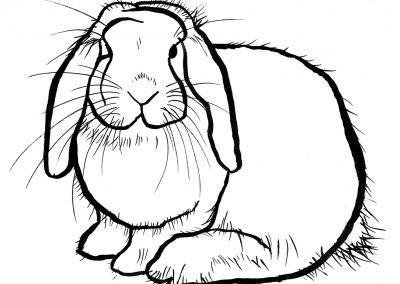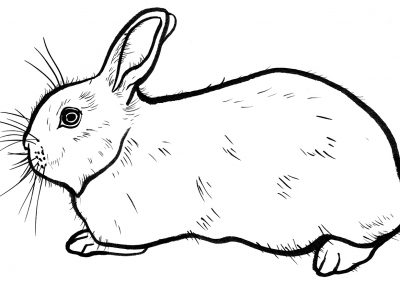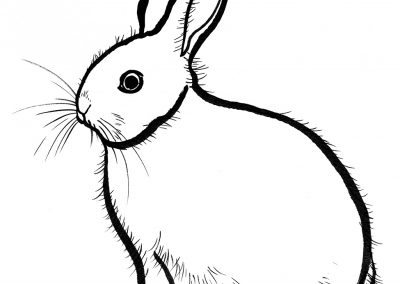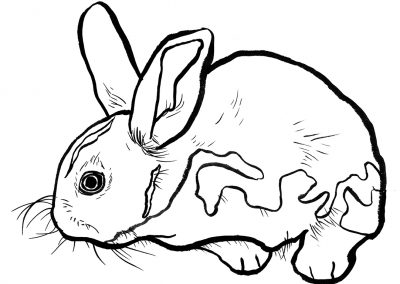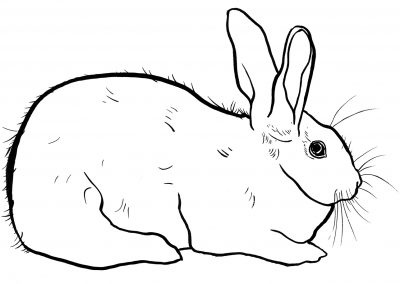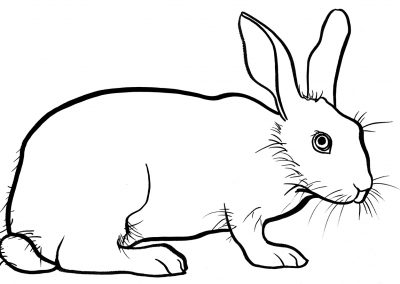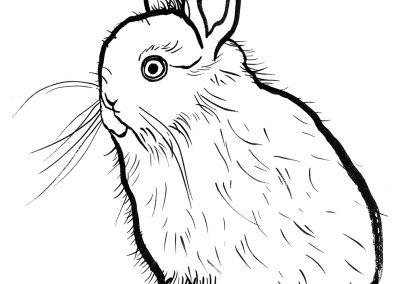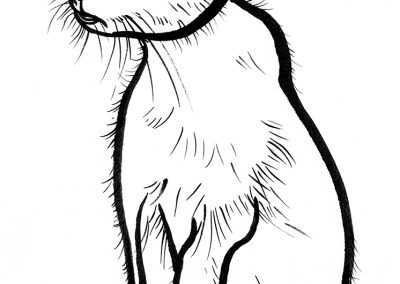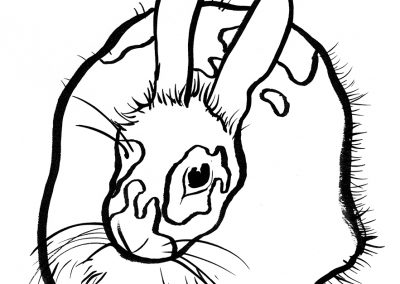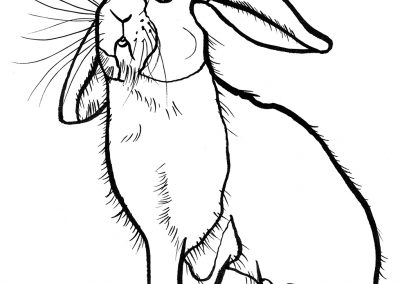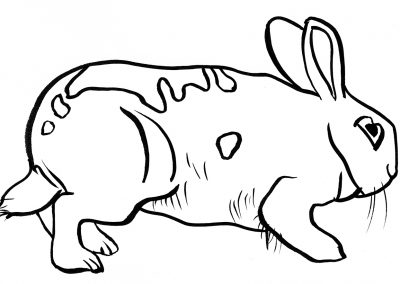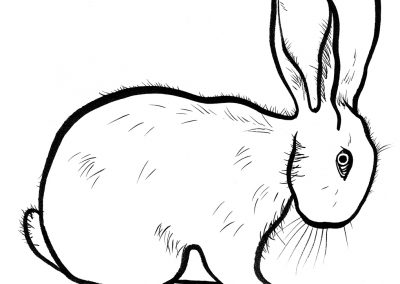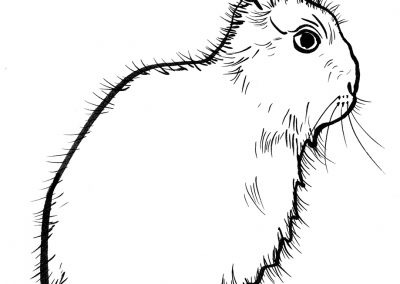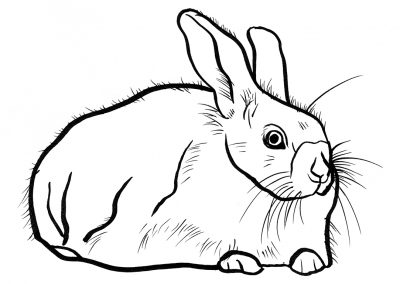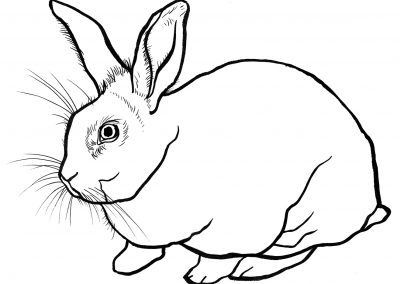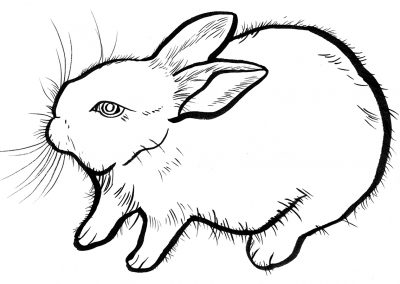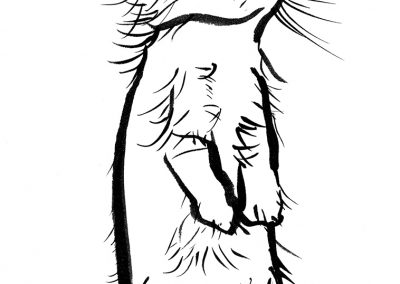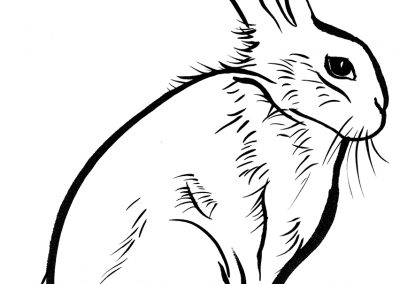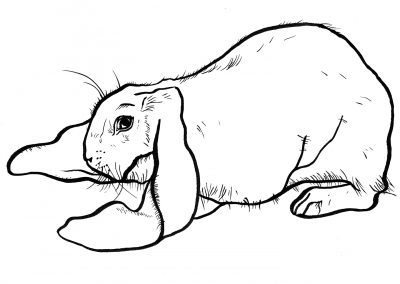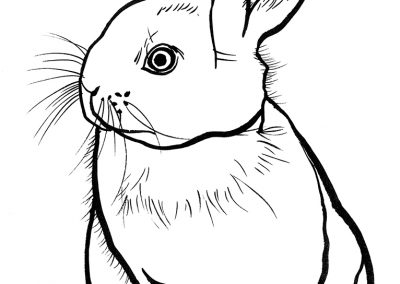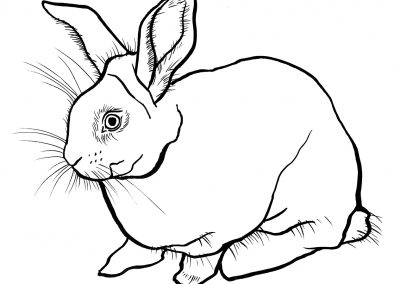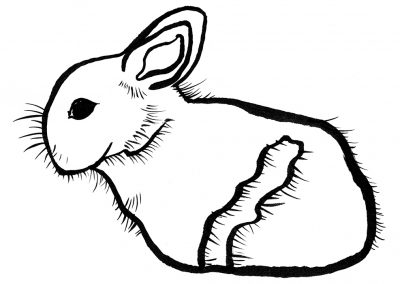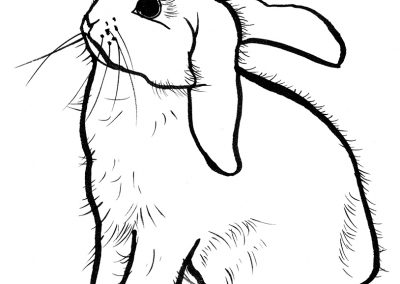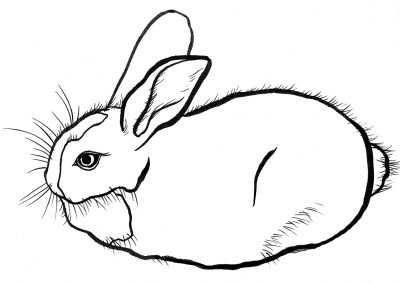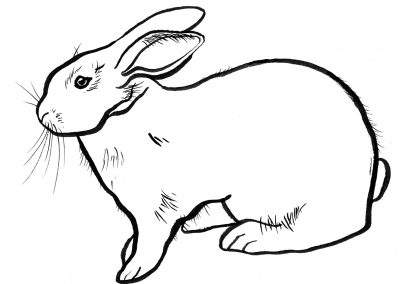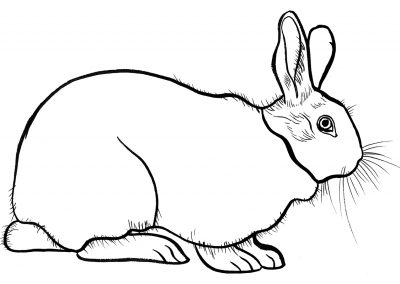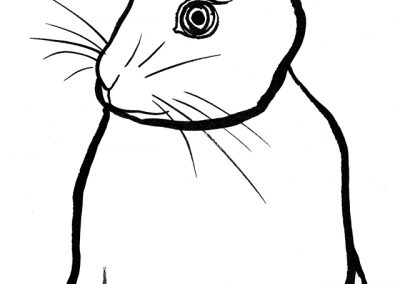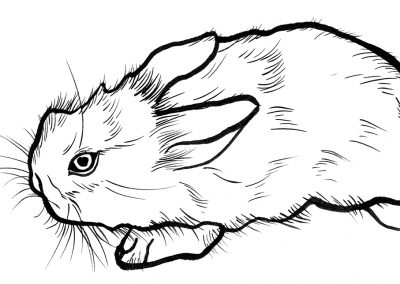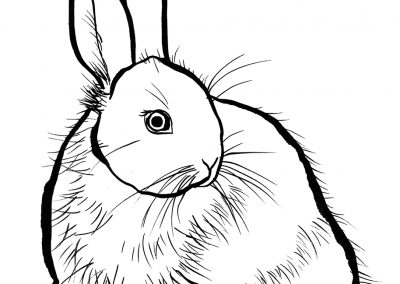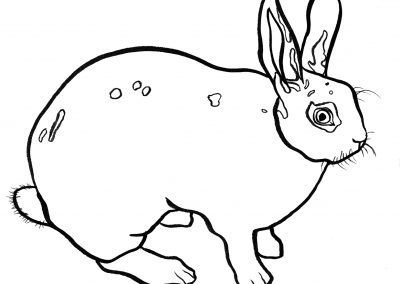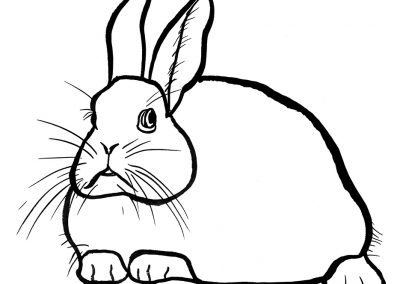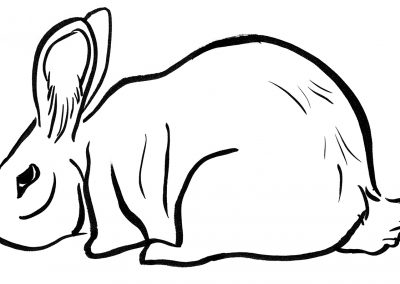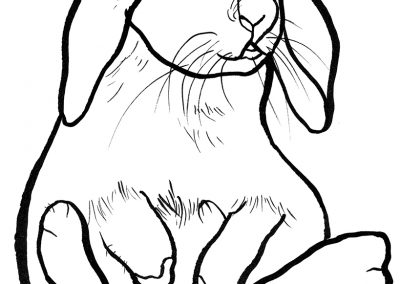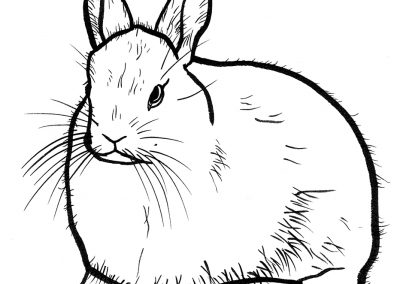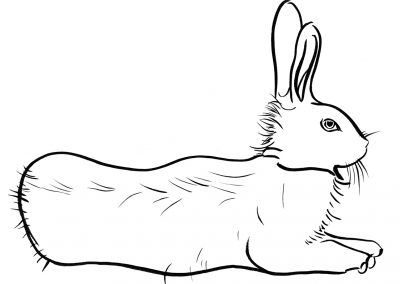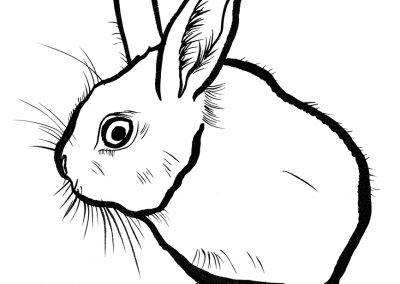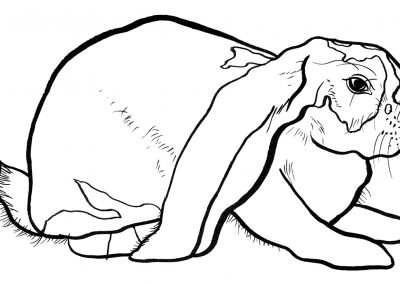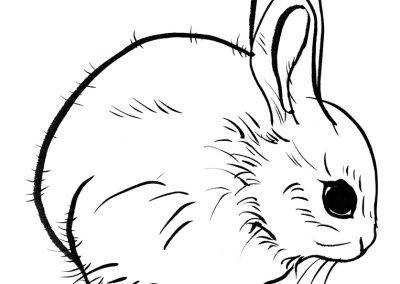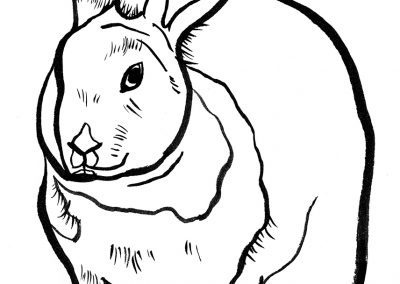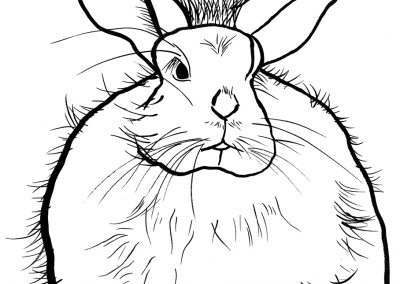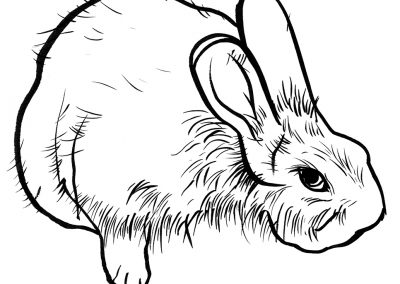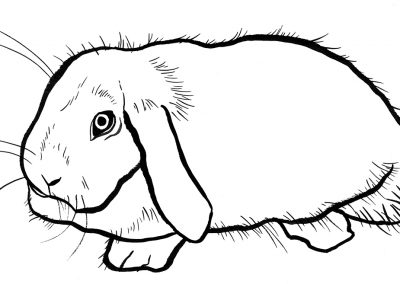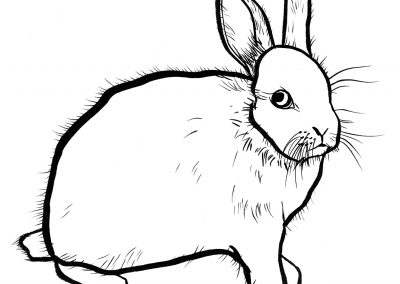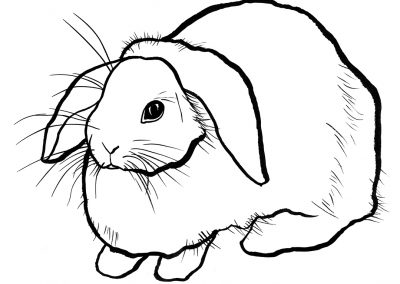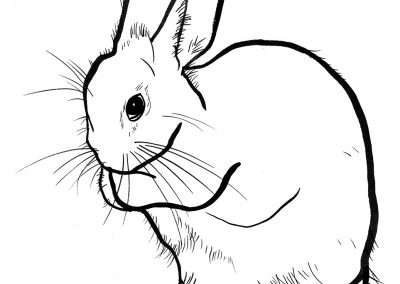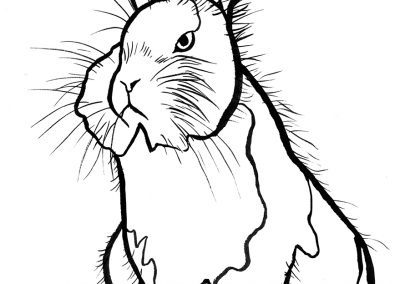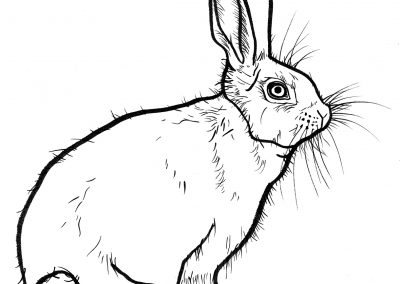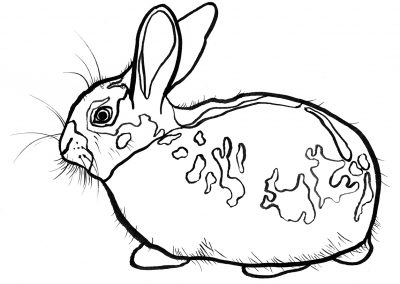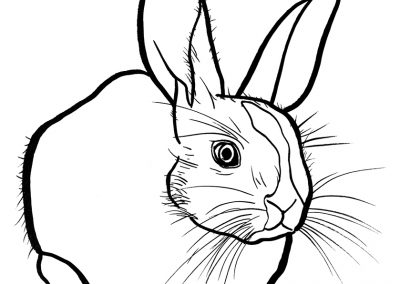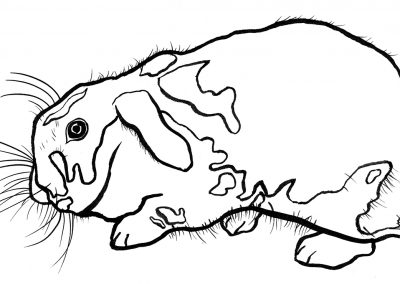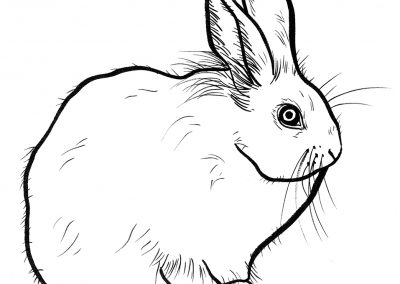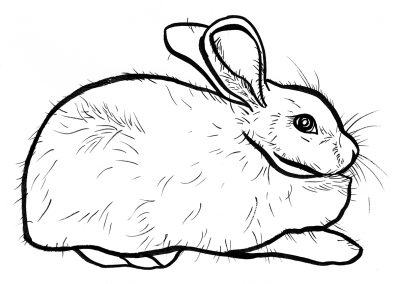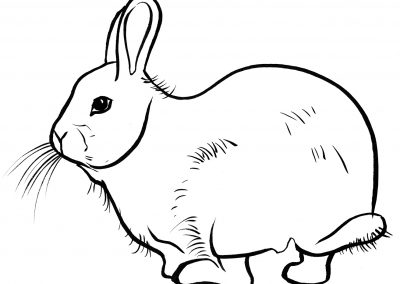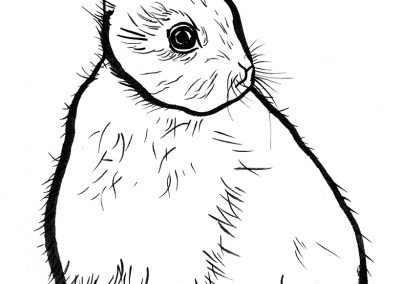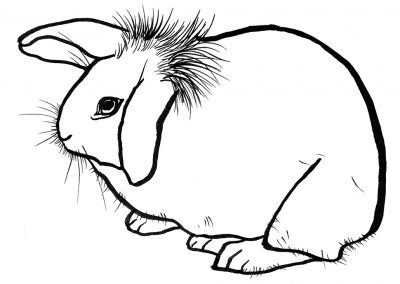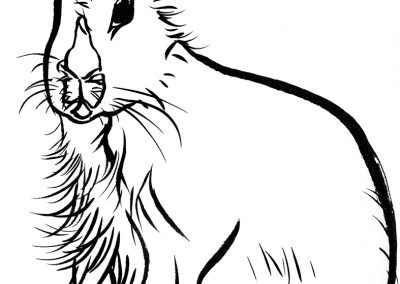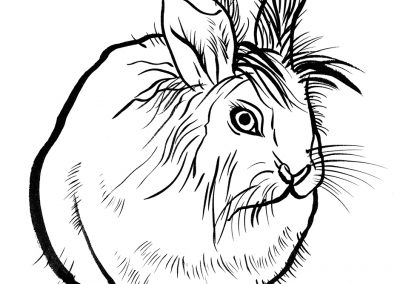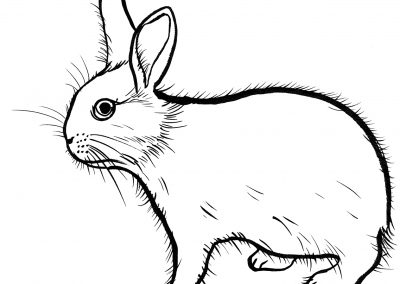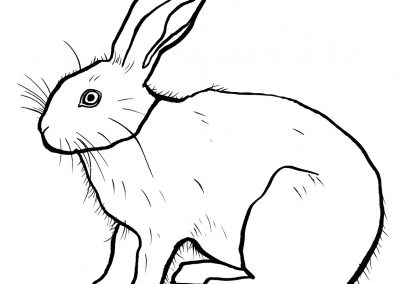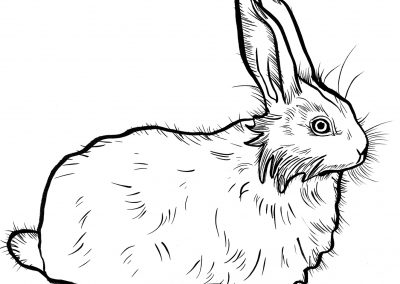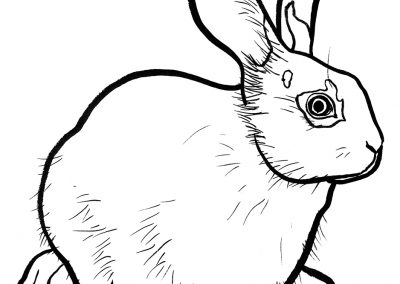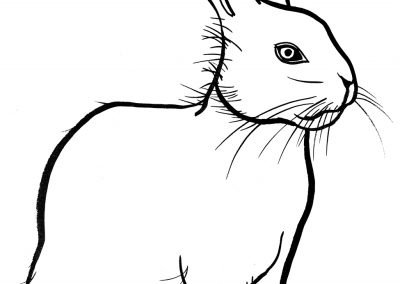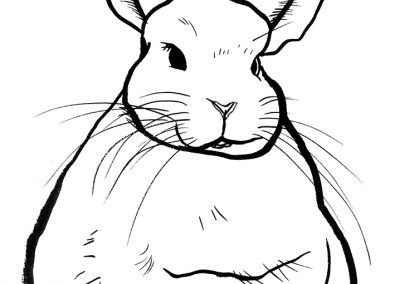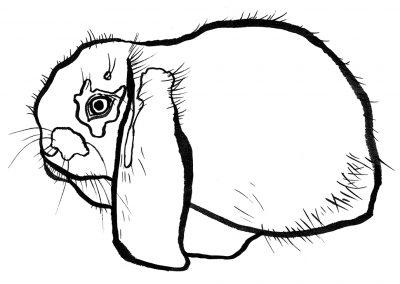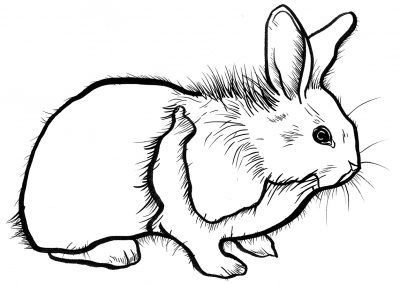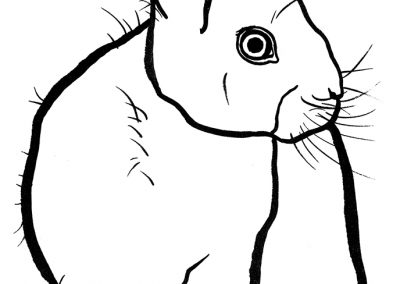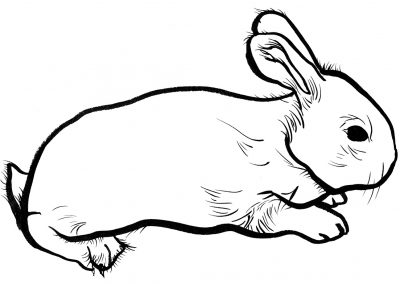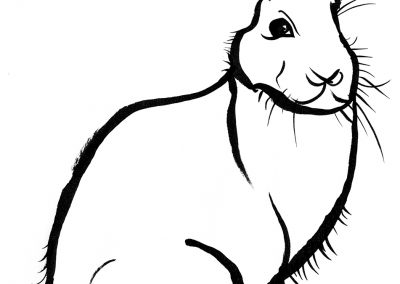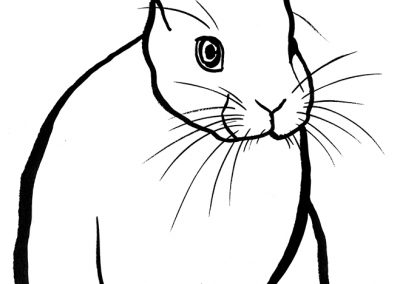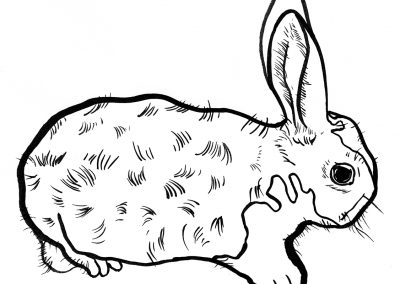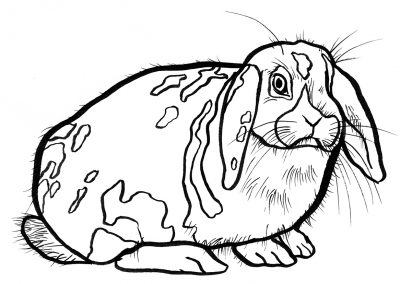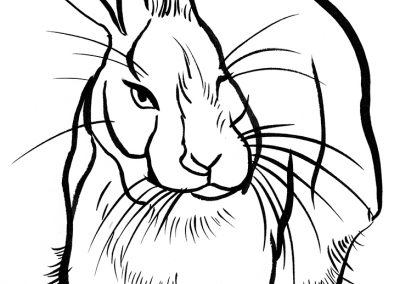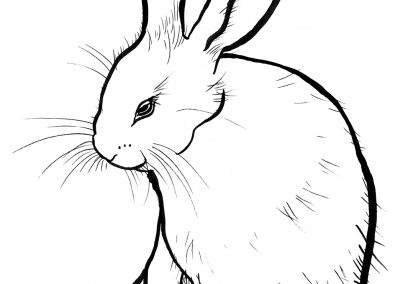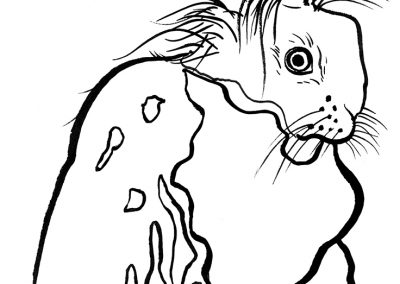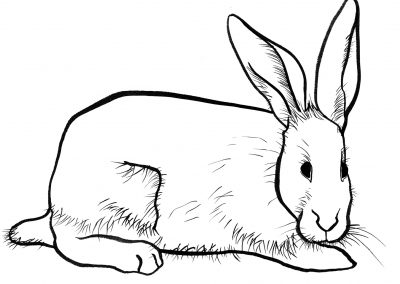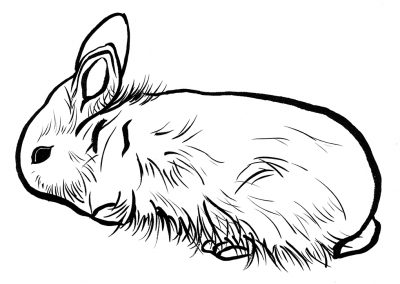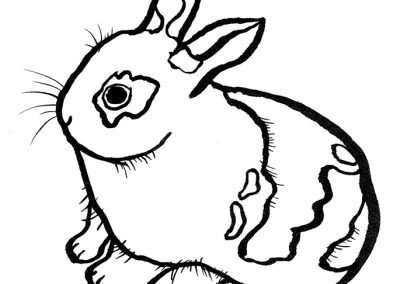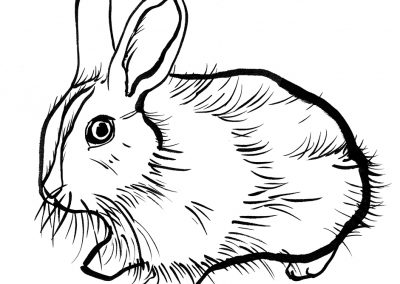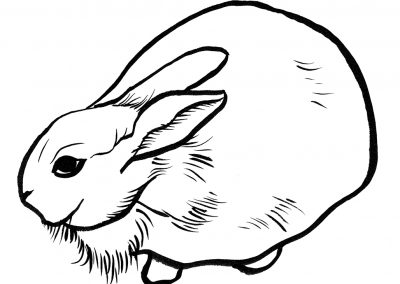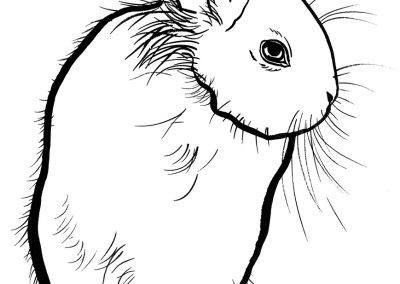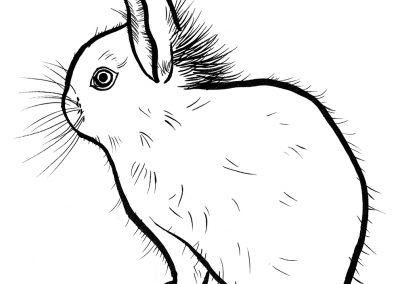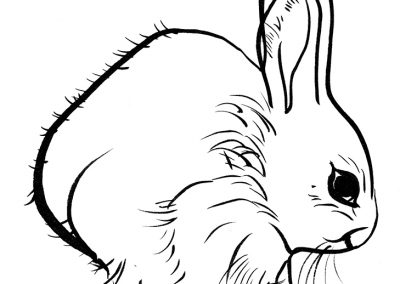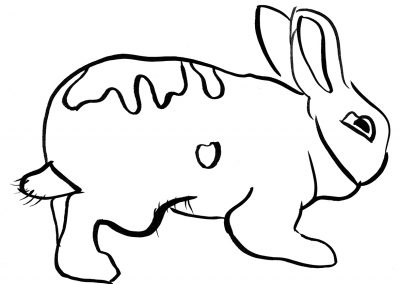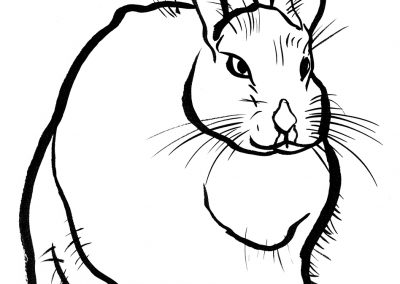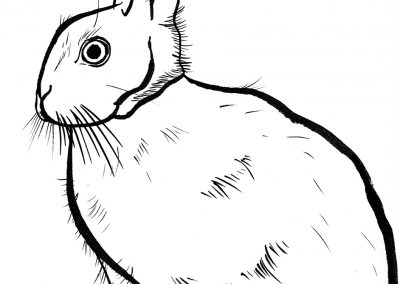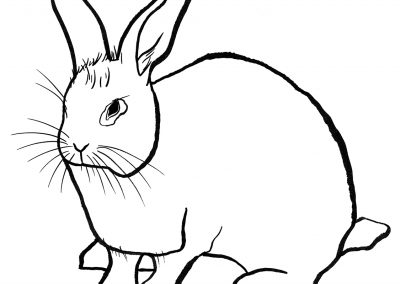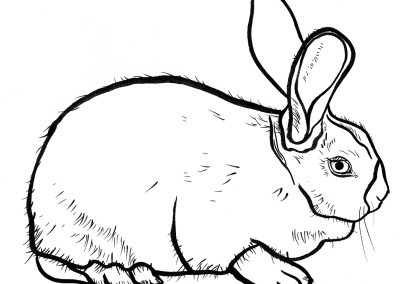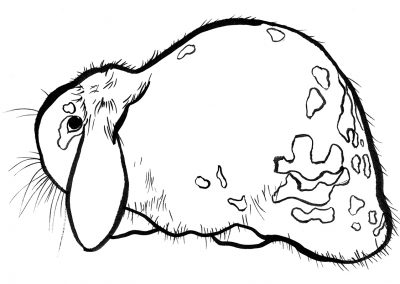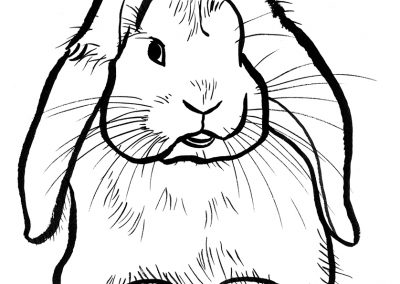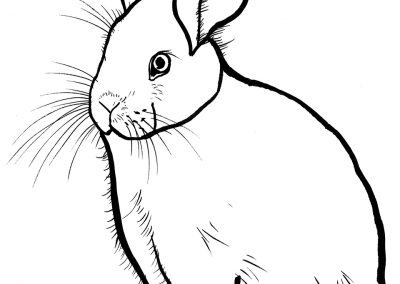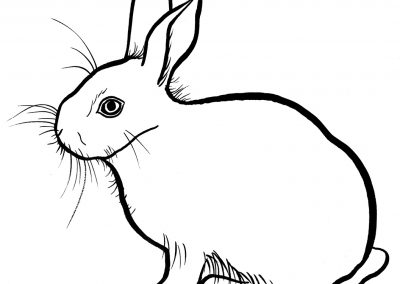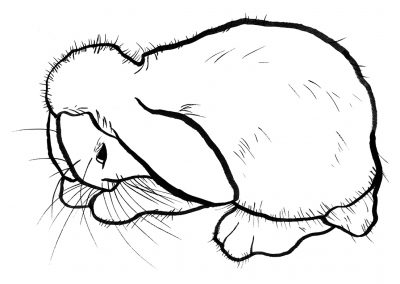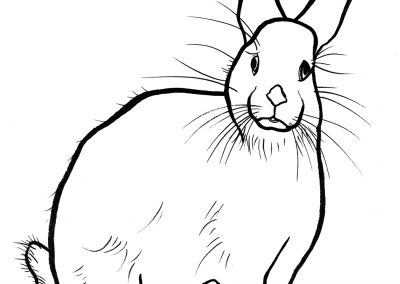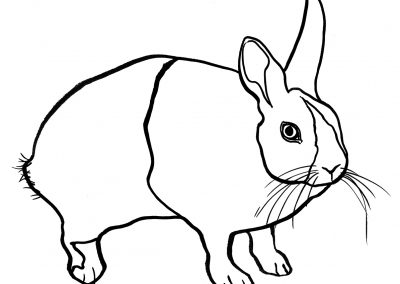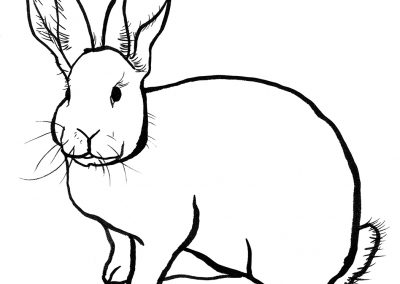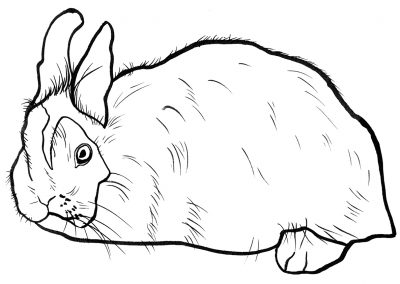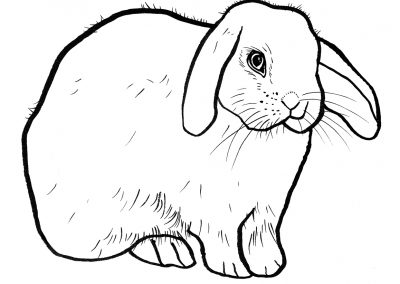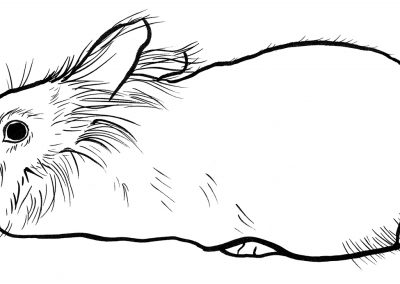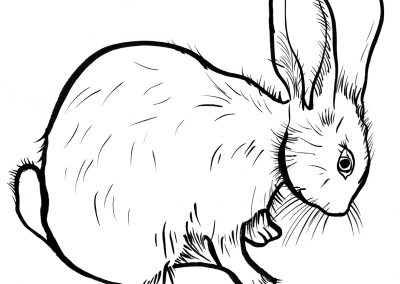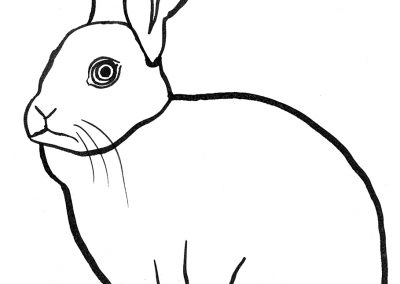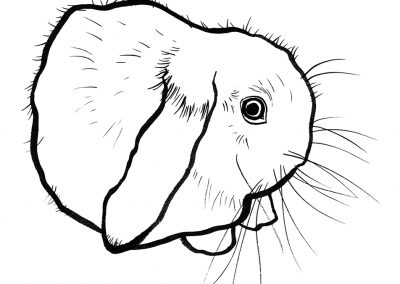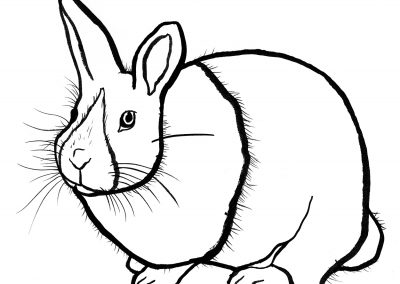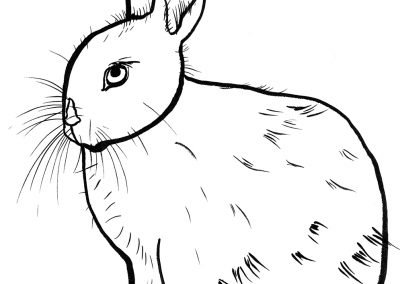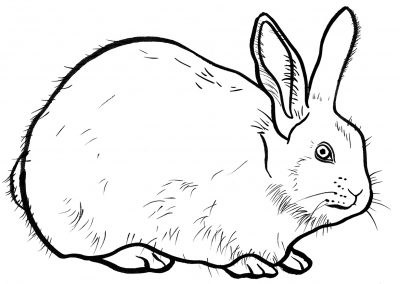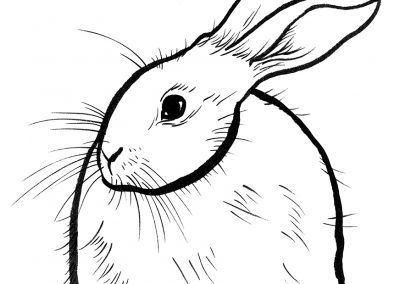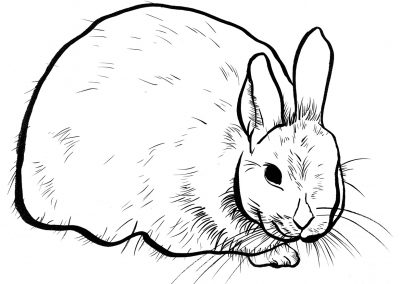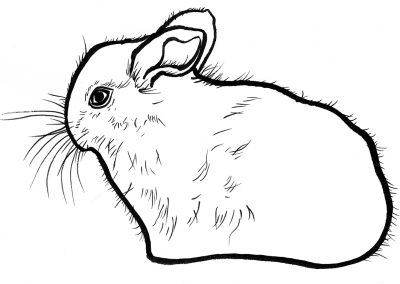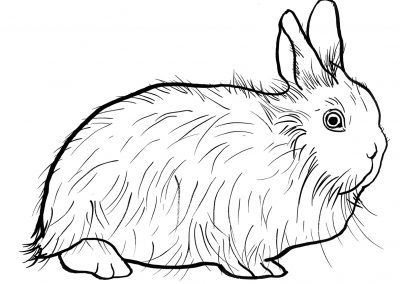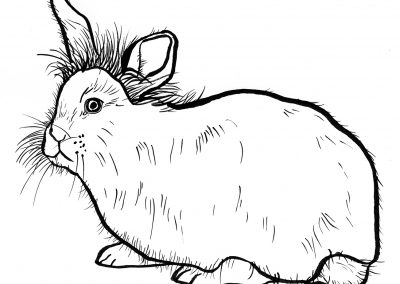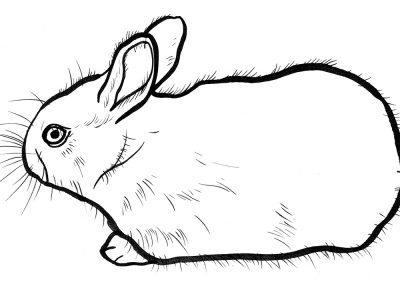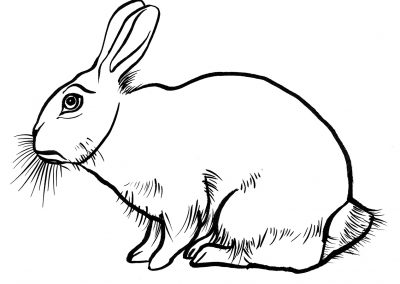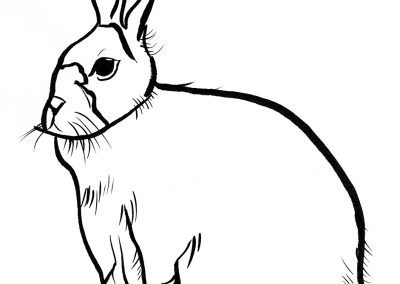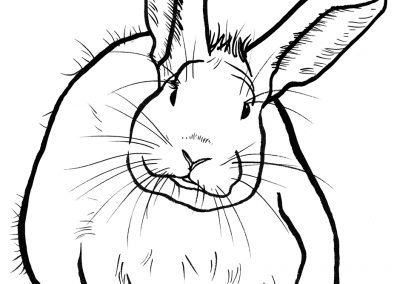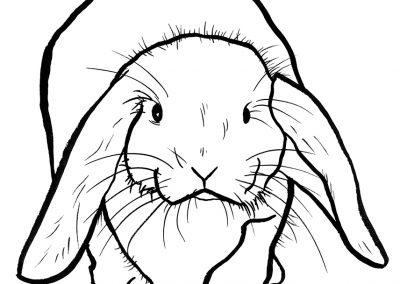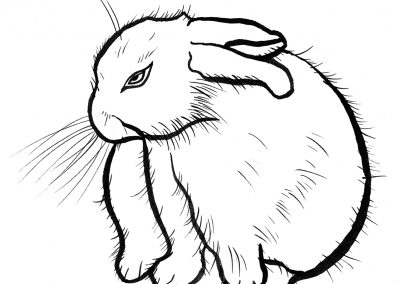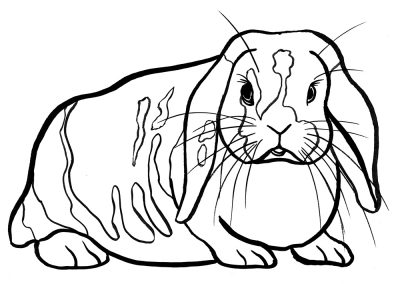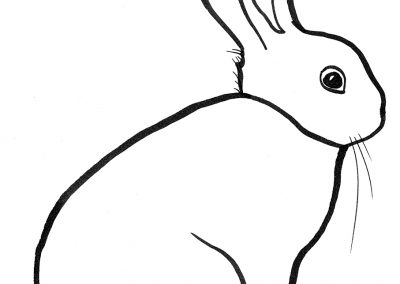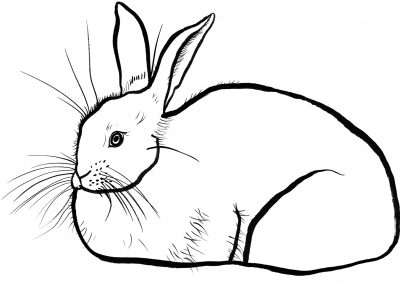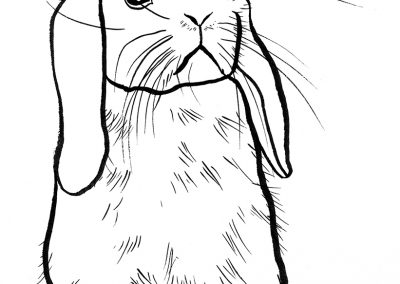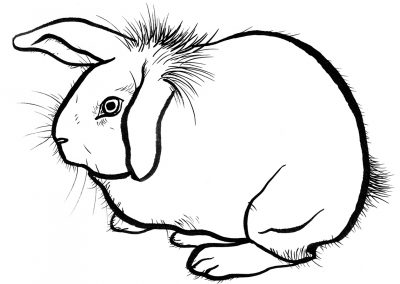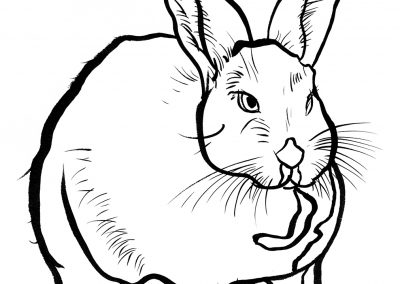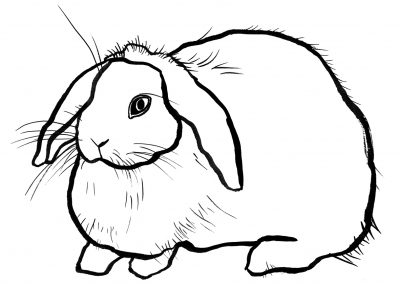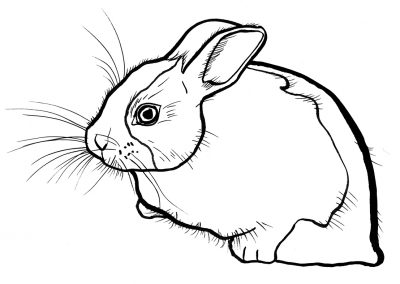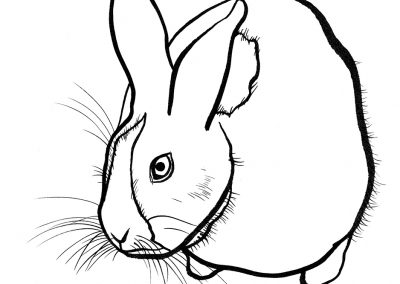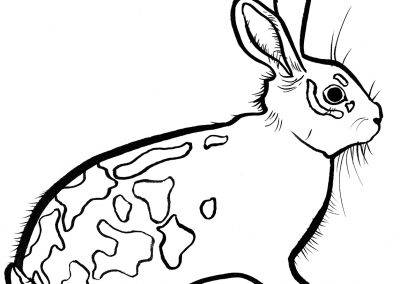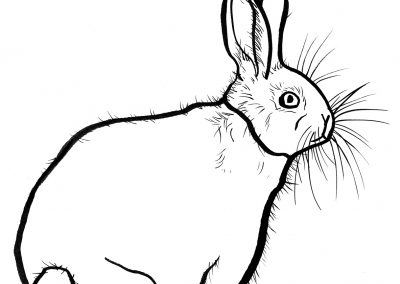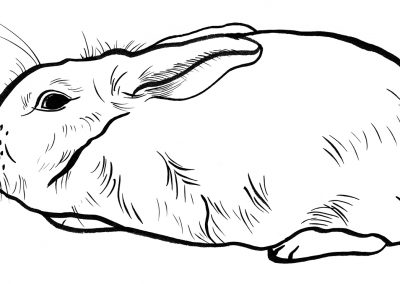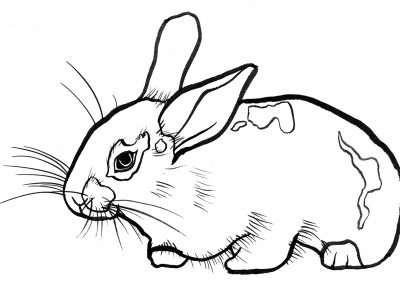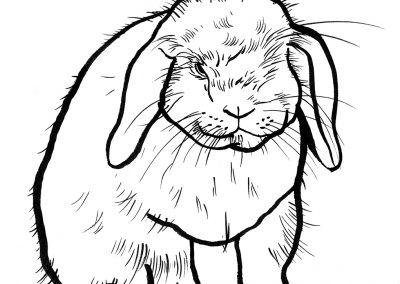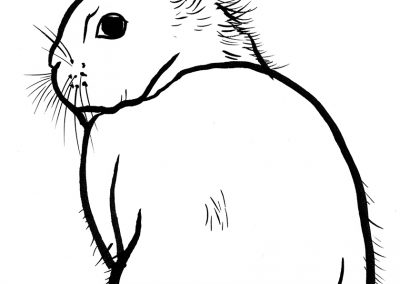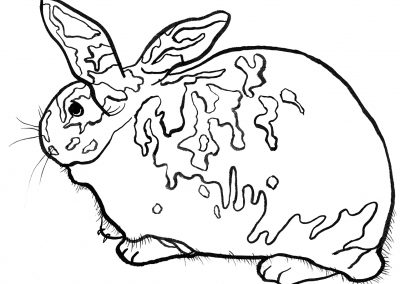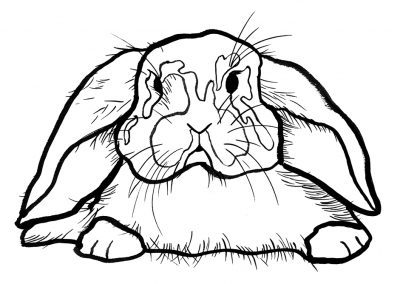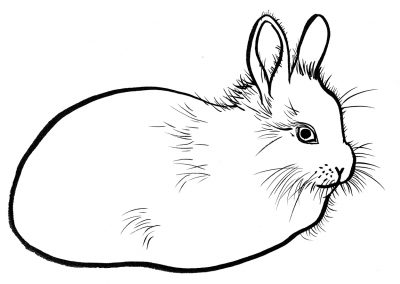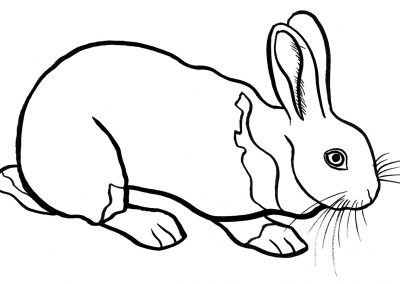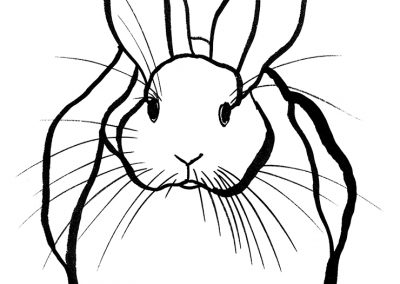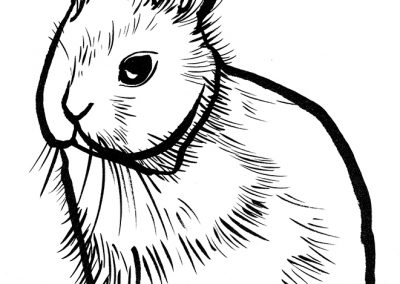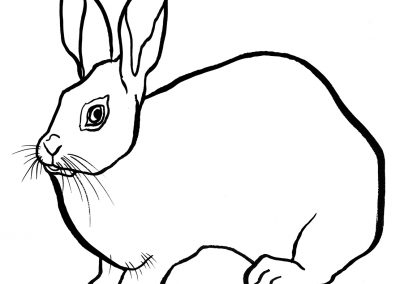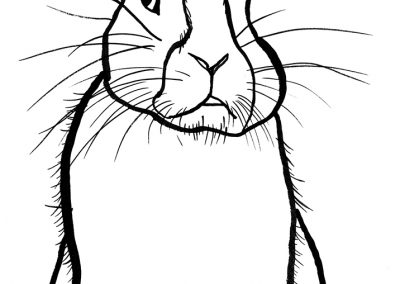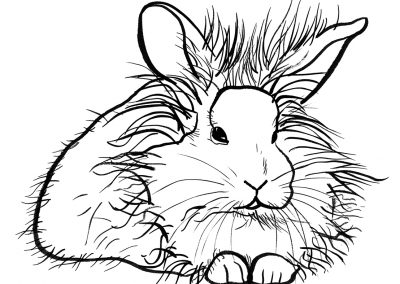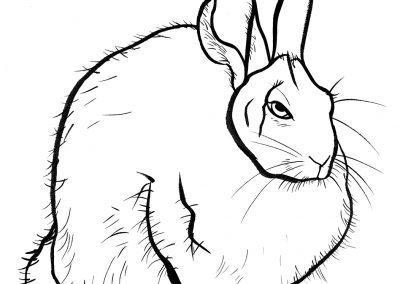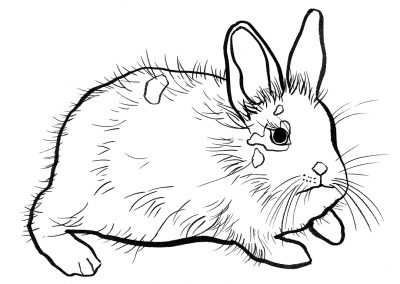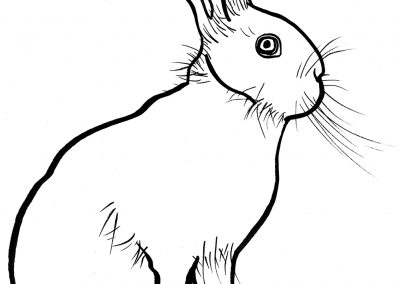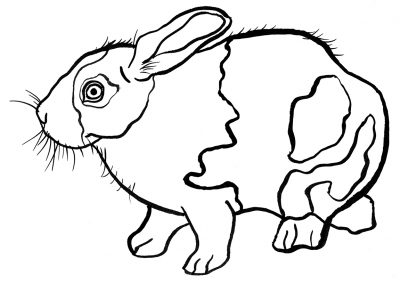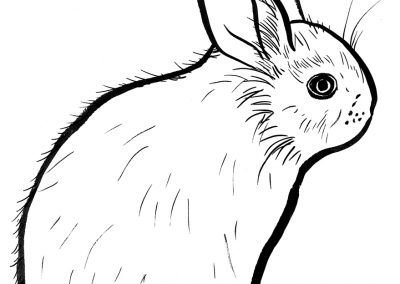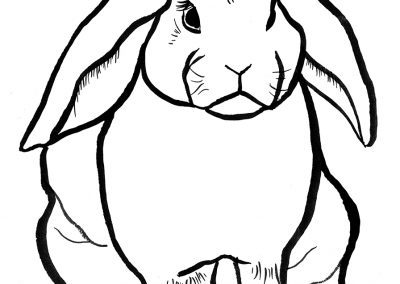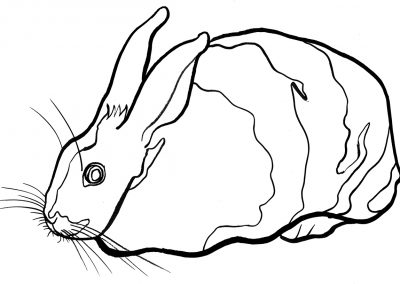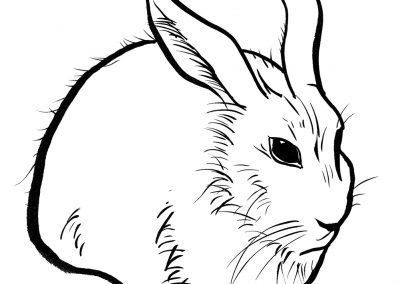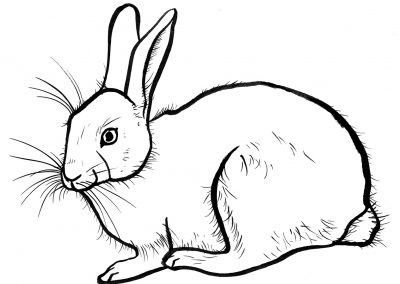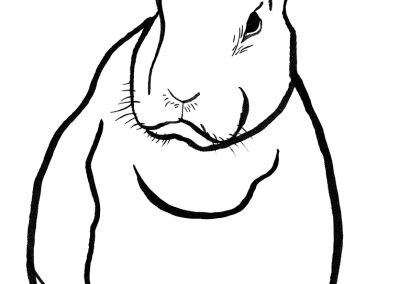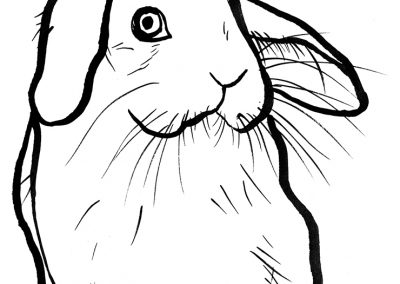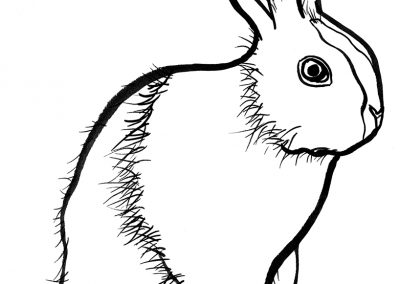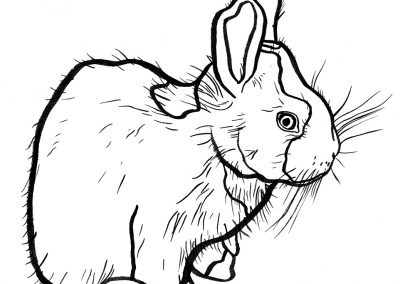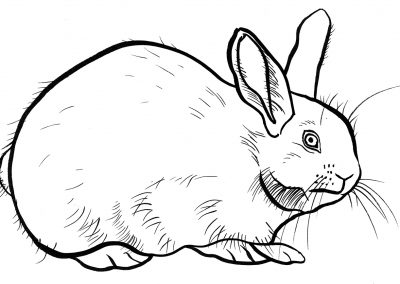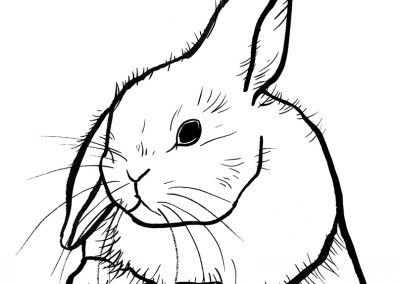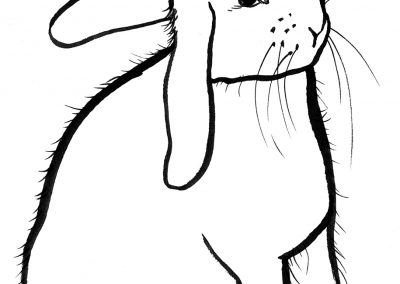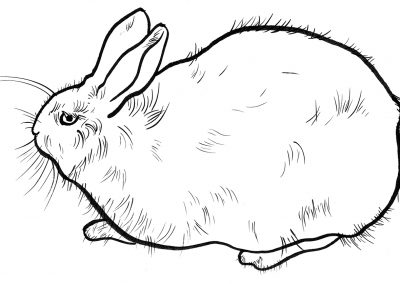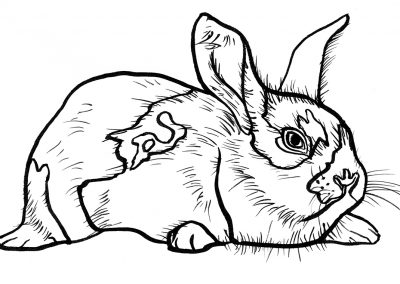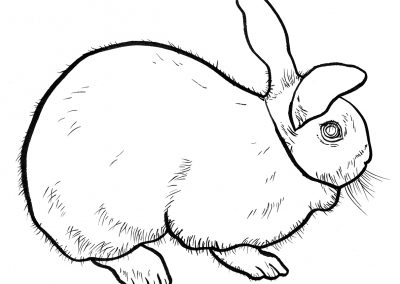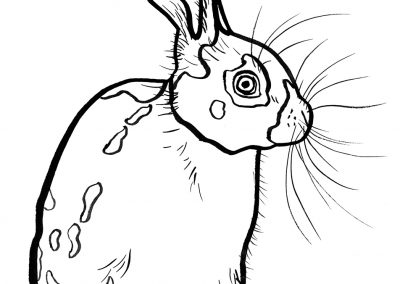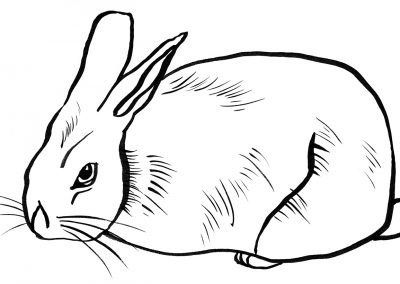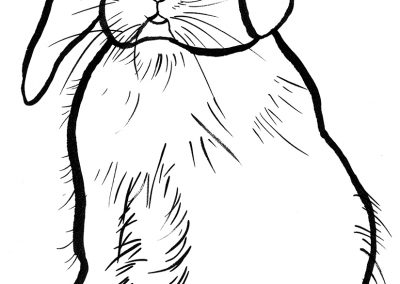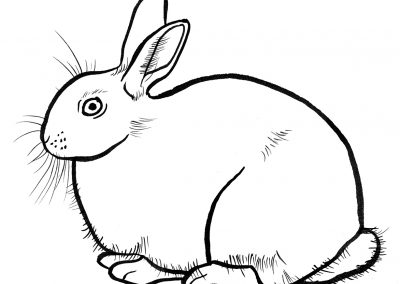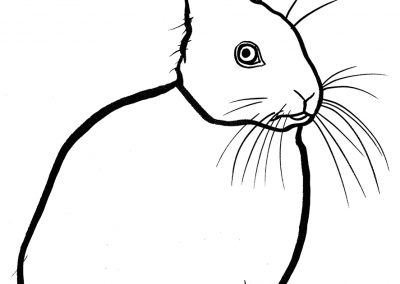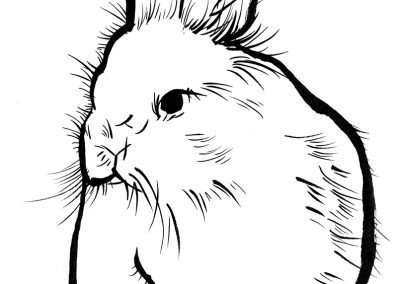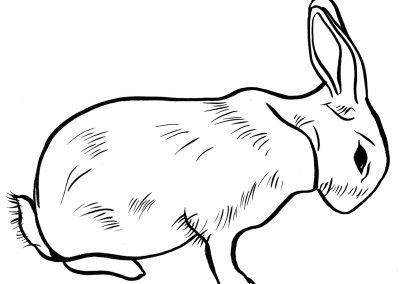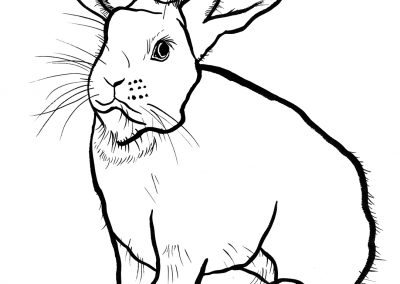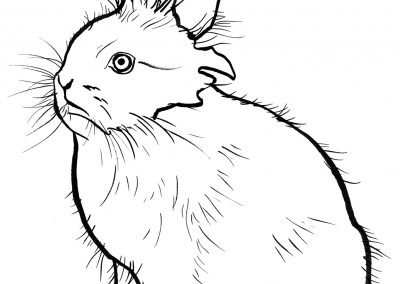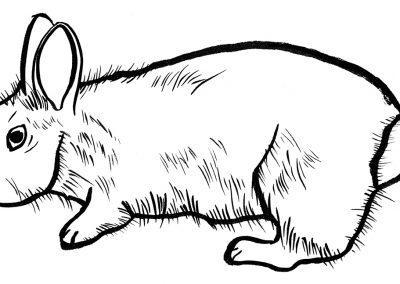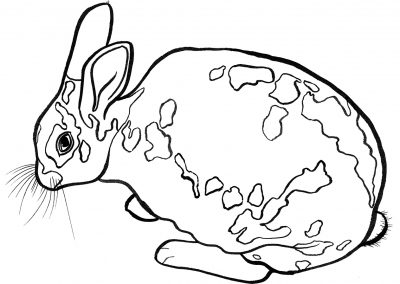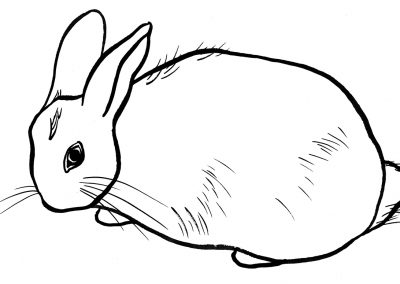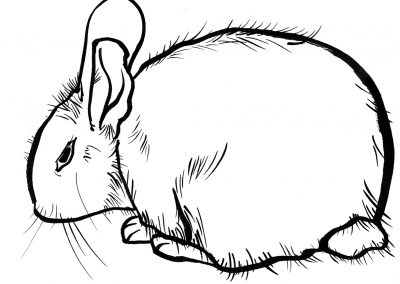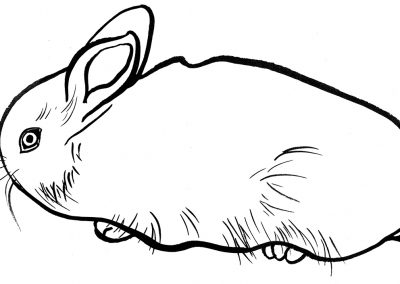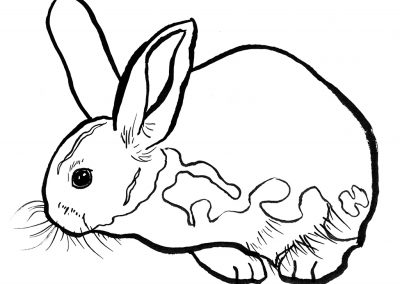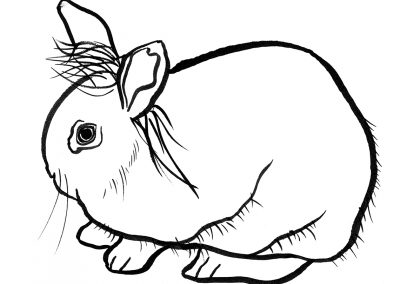
HOW TO TAKE CARE OF PET RABBITS
235 PAGE, ILLUSTRATED BOOK WITH ESSAY
Two Hundred and Thirty Rabbits
Go to Texas
or
How to Take Care of Pet Rabbits
A CBC news headline in the spring of 2010 proclaimed, “Rabbits causing headaches at UVic.” “Wild rabbits are making a mess and creating hazards for athletes and others on the campus of the University of Victoria…” by “leaving droppings, destroying vegetation and digging holes,” furthermore, “they actually kill trees.” And, three to five rabbits a day must be “cleaned up” from university roads. In other words, rabbits were eating, shitting, and dying on campus. Needless to say, they were also procreating. Yet, as one student observed, “When you have a bad day, it’s just really fun to get an apple and start feeding a bunny.”
The University initially considered culling the rabbits, however, pressure from animal advocacy groups led to over eight hundred rabbits being trapped, sterilized and moved to various sanctuaries around North America. Some were relocated to Coombs here on Vancouver Island; others were moved to Salt Spring Island. Two hundred and thirty rabbits were transported to a sanctuary in Texas where, according to the rabbit rescue venture Rabbitats, the warmer winter “will no doubt delight the bunnies.”
To describe the rabbits on campus as “wild” is misleading. Most of the rabbit population at the university were the descendants of abandoned domesticated rabbits and are more accurately and commonly described as “feral.” Domesticated rabbits themselves are descended from the European rabbit. Mingling with the feral rabbits were eastern cottontail rabbits, an introduced or “alien” species. Although British Columbia is home to two native species of rabbit, the white-tailed jack rabbit and Nuttall’s cottontail, Vancouver Island itself has no native rabbits. After first being introduced to Washington State in 1927 for the benefit of hunters, the eastern cottontail rabbit was introduced to Vancouver Island in 1964. Both the Eastern cottontail and the European rabbit are considered by the Province of British Columbia to be “Schedule C species” and as such “can be captured or killed anywhere at any time” without a hunting license.
I went rabbit hunting once but, presumably due to the failure of our attempt, had forgotten that that had been the original intention of the outing. Last April, I visited an abandoned farmer’s field in the company of a trained falconer, three of my classmates and a Harris hawk named Anakin. It was a Friday and the last day of a week-long falconry course I was taking through the Raptor Centre in Duncan. Our instructor had secured for our purposes the use of the field along with the assurance that there were rabbits in said field. We arrived to find that the field was covered with Scotch broom, another prolific and invasive alien species. We immediately spotted a rabbit. The hawk was released and we began to push our way through the thickets. Anakin flew above our heads; our purposes were attuned. The broom was difficult to move through and in places stood higher than our heads. We strategized how we might flush out a rabbit to the clearing in the centre of the field but despite spotting several more rabbits we were unable to drive one out. Anakin rested in one of the cedar trees at the edge of the field. After an hour we gave up. Anakin was beckoned and flew to the gloved fist of our guide. He was returned to his travelling crate and we all climbed into the station wagon and drove away.
I have heard stories that at the peak of the UVic rabbit infestation, birds of prey hunted rabbits lackadaisically and got fat. It has been reported that after the live trapping of the majority of rabbits in 2010 the population was further reduced by hawks and owls.
What is a suitable habitat for a disavowed domesticated rabbit? Rabbitats For Humanity suggests that they “can provide safe, affordable colony housing for anywhere from six to 60 sterilized rabbits. The designs vary but they all incorporate similar elements that make them 100% escape proof and 99% predator-proof.” In other words, Rabbitats can provide a space for rabbits to exist but not to live depending how one defines living. Perhaps that is why the company is called Rabbitats for Humanity not Rabbitats for Rabbits.
The suggestion that the rabbits ought to have been captured and cooked did not breach the divide between online commenters to mainstream commentary. On the huntingbc.ca forum, 303carbine warns against eating local rabbits – “they are dirty little vermin that are usually infested with worms and parasites.” However, GrullaGuy who has been hunting and eating rabbits since 2000, says, “I use them in stews, and deep fry them. My favourite dish is hot hop wings made with the hind legs and tenderloin. The more inedible portions, I fry up and give to my dog as treats.” I first ate rabbit in 2005 in Paris. France, not Texas. I purchased a little pastry-wrapped parcel of rabbit meat at a market that had sprung up one morning on the street outside of the flat where I was staying. My visit to Paris marked the end of the beginning of the end of my vegetarianism. I had been sliding down a slippery slope for a few years. Most of my transgressions had involved greasy slabs of pepperoni pizza in New York City. But it was Paris that did me in. I had gone to a restaurant with a Parisian friend of a friend from Vancouver and was faced with several menu items that were more or less the same – a piece of meat with a preparation of potatoes. My choice of lamb that night may seem bold to those similarly sitting on the brink between eating non-human animals and not eating non-human animals but I assure you I made that selection because I had (and I can’t for the life of my remember how this was determined at the time) been led to believe that the lamb portion would be the smallest portion of all the proffered meats. It was one thing to down twelve thin slices of pepperoni on a $3 triangle of hot, cheesy bread, it was another to pay for and consume ounces of solid flesh. But the lamb was delicious and has since become my most favourite of fleshes. The rabbit pie I had eaten cold and so never felt I knew how delicious it might or might not have been.
In the year following what I would like to call The Great Trap, Sterilize and ReHome Endeavour of 2010, the University of Victoria changed its policy regarding rabbits from trap and relocated to trap and kill. Previous plans to allow 200 rabbits to remain on campus were reevaluated. “People [were] continuing to drop rabbits off on campus.” said Tom Smith, director of facilities management. While he “acknowledges many students and faculty will miss the rabbits… [Smith] also thinks people will be quick to move on once they ‘get beyond their sentimentality.’”
I’ve been thinking a lot about sentimentality this year. Until quite recently, I considered myself an anti-sentimentalist. I wince at outpourings of feelings and consider myself hyper-vigilant to signs of disingenuousness. However, upon investigation I have discovered that my stance is a symptom of my Protestant upbringing in Western society. In his essay, Zoöphilpsychosis, Tobias Menely begins, “There are few emotional imperatives in Anglo-American culture so widely accepted, if hazily understood, as those embedded in the perception that there is something essentially suspect about sentimentality.” He continues by pointing out contradictions within criticisms of the sentimentalist. Sentimentalists are accused of not having genuine feelings and paradoxically, feeling too much, especially when it comes to animal welfare. The essay’s mouthful of a title, zoöphilpsychosis, is a term coined by neurologist and vivisectionest, Charles Dana in 1909. He invented the word, rather conveniently for himself, to describe a mental illness defined by “an obsessive sensitivity to animal suffering.” Unsurprisingly, it was predominately women who suffered from the condition. The term didn’t stick – it yields only 654 search results on Google. Still, the critique of the sentimentalist persists. Menely continues “sentimentality’s devaluation has accomplished the crucial cultural work of guarding the border of human community, a border disrupted by the cross-species sympathies widely promoted within sentimental culture.” And so the sentimentalist threatens the fantasy of human exceptionalism.
“Cross species sympathy” falls far short of addressing the complexity of multispecies relationships Donna Haraway asks us to consider in her book, When Species Meet. When it comes to “facing up to the outrage of human exceptionalism:”
multispecies coflourishing requires simultaneous, contradictory truths if we take seriously not the command that grounds human exceptionalism, “Thou shalt not kill,” but rather the command that makes us face nurturing and killing as an inescapable part of mortal companion species entanglements, namely, “Thou shalt not make killable.”…knowing this is not the end but the beginning of serious accountability inside worldly complexities.
The University of Victoria’s unwitting entanglement with rabbits, care of humans who misunderstood the means of relinquishing a non-human animal companion, led to a scenario wherein the rabbits were required not to live, not to die, not to chew trees, not to dig holes, not to procreate, not to endanger athletes, not to be eaten by birds of prey, not to be run over by cars, not to be fed carrots by students, not to be captured, cooked and eaten but to be trapped, sterilized and sent south for the most wonderful winter of their lives.

